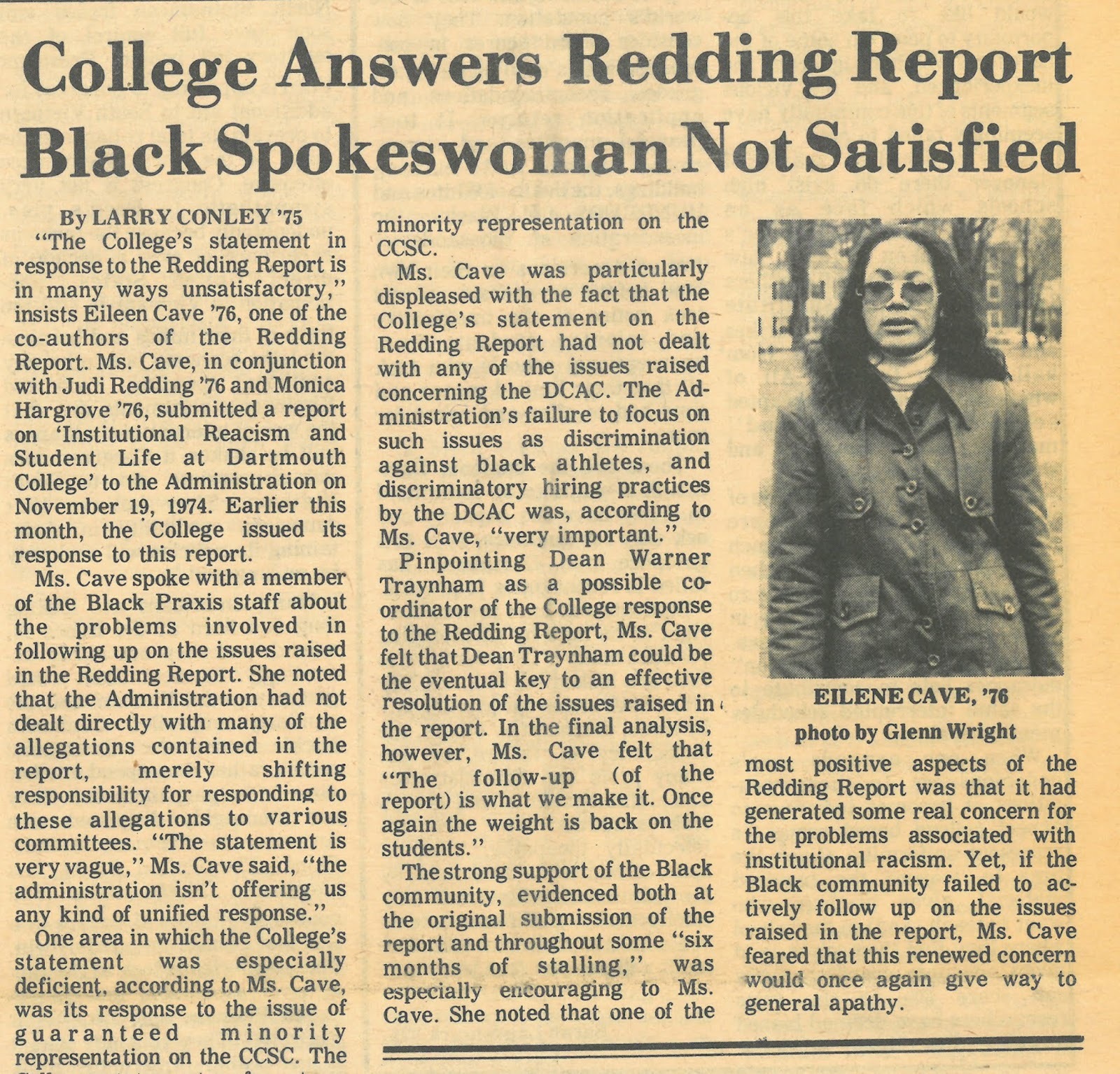The Redding Report and its Implications
After taking a sociology course centered around institutional racism, JB Redding approached her close friends Eileen Cave and Monica Hargrove with an idea.
“…once I took the class, I came back with the key points and we just started talking about, 'Well, that seems to be present.' And for me, institutional racism, not racism as a personal animosity, but racism in terms of the structures and the full systemic problem within an institution, that concept was new to me. So obviously we were in a particular institution, there was a dearth of people of color, there were issues with Native Americans. There were tiny in number, very, very, very few Native Americans at a time for an institution that was founded to educate Native Americans. And so we just thought, well, let's look at the numbers, let's look at positions, let's look at seniority, let's look at that across the college framework and see what happens.…”
In a newspaper article titled, "College Answers Redding Report Black Spokeswoman Not Satisfied," Eilene Cave (‘76) shares her concern for the “general apathy” of Dartmouth's administration towards the demands of Black faculty, students, and staff. It took six months for the College to respond to "The Redding Report." This illuminates the culture of responsibility of Dartmouth, showing the administration “merely shifting responsibility for responding to these allegations to various committees.”
Yet, forty-seven years later, "another disturbing parallel connecting the decades-wide gap between the institute of the 70s and the one of today is the College's response (Reaves, 2019)". On July 14, 2020, a collective of Black faculty, students, and staff across the disciplines issued an open letter to Dartmouth senior leadership outlining the College's inability "to unravel its built-in structural racism perpetuated through the superficial and short-term fixes." "Dartmouth has this struggle," Redding echoes, of balancing genuine intellectual curiosity with the voices "from the world that used to serve the table." Historically, enslaved labor fueled an exploitative economy that built and sustained institutions of higher learning in the United States. Rather than overlooking this legacy of slavery, Dartmouth must reckon with its prejudiced history to promote true intellectual and racial diversity.
Activism at the Expense of Personal Safety
Once the Redding Report was published and disseminated, the authors were startled at the institutional hostility they received in return. Redding in particular received "a verbal, direct threat" from an administrative member which nearly broke her spirit.
"I will say that I received a direct threat to my well-being that was related to the Redding Report. And it was called the Redding Report at the time that we were on campus. Someone administrative came, set an appointment with me. I know it was just me and that person and made a verbal, direct threat that I, as a young innocent person, it nearly broke my spirit. So I know that it was not apathy. It was animosity and it was a hostility that I never would have imagined."
Redding emphasizes, "I'm at an institution, part of your job is to protect me ...." Although the College offered a course on Institutional Racism, it failed to acknowledge its role in upholding the system, and as a result, endangered the lives of its changing student body.
The Report's influence "collaterally inspired" student activism on campus. Even "odd groups of people would come to [Redding's] dorm and try to get [her] to be a speaker for their project. Read the following page to learn about Black student activism at Dartmouth and at other Ivy League schools.


